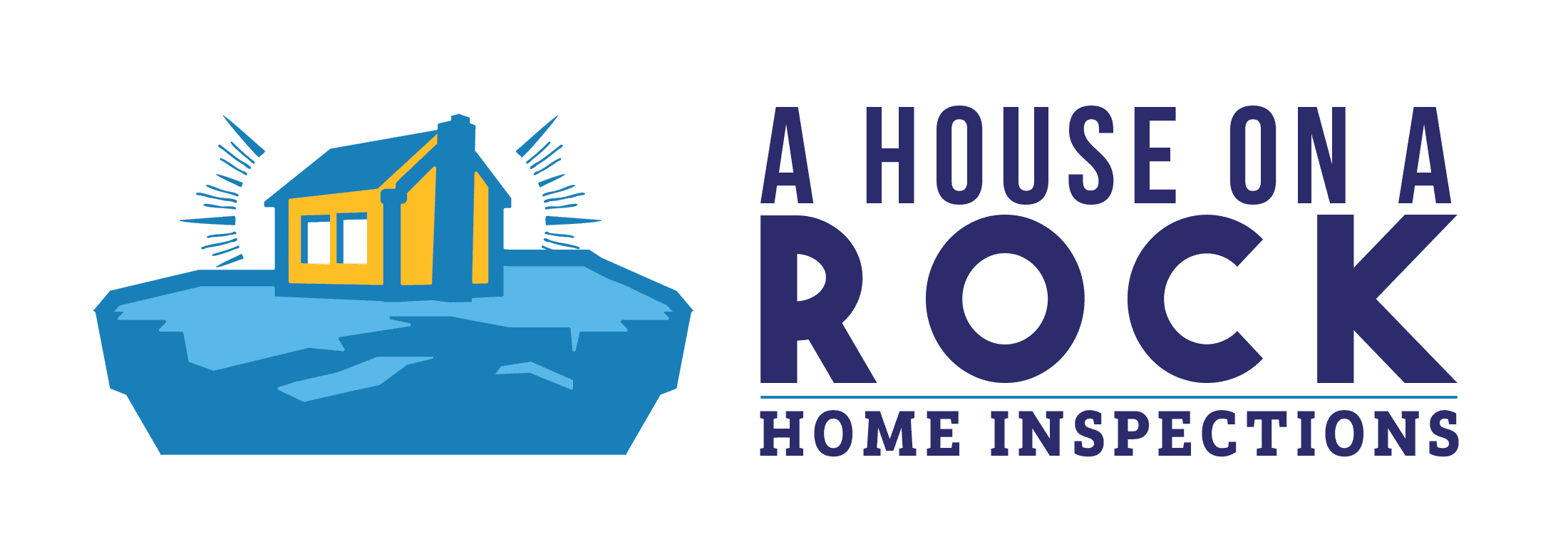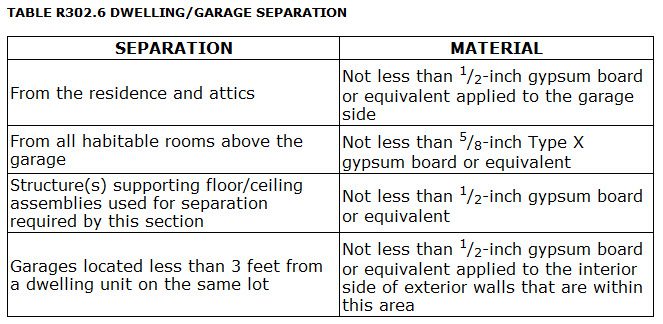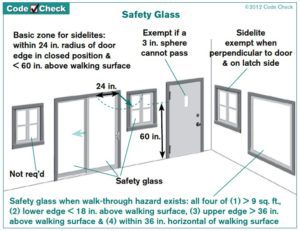10 Home Inspection Myths In Your Report
\
It’s pretty obvious that the worst thing that can happen during your home inspection, is that the inspector misses a major defect. Next on the list though is writing up a defect that isn’t a defect at all. It can cause a lot of confusion between the Realtors, buyers, and sellers. We have run into this many times over the years (and have been guilty of it a few times as well), and we’ve compiled and debunked some of the more common home inspection myths we see and hear inspectors writing up.
Home Inspection Myth 1
The door between the house and the garage needs to be fire-rated.
The Truth
The truth is that a fire-rated door is one of three options. The International Residential Code (used in Virginia) states, “Other openings between the garage and residence shall be equipped with solid wood doors not less than 1 3/8” in thickness, solid or honeycomb core steel doors not less than 1 3/8′ thick, or 20-minute fire rated doors. Notice the “or.” So while a fire-rated door is a good option, it’s just an option.
This home inspection myth is busted.
Home Inspection Myth 2
The wall between the house and the garage is fire-rated. This stems from the same confusion as number 1.
The Truth
The dwelling/garage separation wall has some requirements due to fire safety, but the wall itself does not need to be fire rated. The chart below outlines the requirements. It may seem like a trivial matter, but home inspection reports need to be accurate. Unfortunately, when a home inspector states that the fire rating has been compromised, it’s just not true.
Hopefully, we can put this home inspection myth to bed.
Home Inspection Myth 3
Any window less than 18 inches from the floor requires safety glass.
The truth
The truth is a window less than 18 inches from the floor may require safety glass, but not necessarily. It needs to meet 3 other conditions for safety glass to be required.
Safety glazing is needed “in an individual fixed or operable panel that meets all of the following conditions.
1. The exposed area of an individual pane is larger than 9 square feet; and
2. the bottom edge of the glazing is less than 18 inches above the floor; and
3. The top edge of the glazing is more than 36 inches above the floor; and
4. one or more walking surfaces are within 36 inches, measured horizontally and in a straight line, of the glazing.
The code is pretty clear, so while a window too close to the floor may require safety glazing, there are 3 more measurements an inspector needs to take to determine if a window needs safety glazing.
Home Inspection Myth 4
Gas fired appliances can not have a flexible vent.
The Truth
The truth is that there are UL listed flexible B-vents that are allowed to be used in almost the same capacity as rigid vents. They can be difficult to discern from dryer vents sometimes, but they typically have a label stating their listing. You can see in the cut out photo to the left the flexible B vent has two walls just as a rigid B-vent does.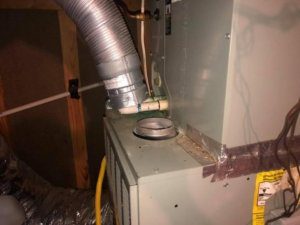

Home Inspection Myth 5
Gas ranges need to be vented to the outdoors.
The Truth
While going to the outside is a best practice, and some of my clients have made it a priority for me to check if it goes to the outside, it’s not typically required. Local building codes do say that “Range hoods shall discharge to the outdoors through a single-wall duct…”, but wait, there’s more.
“Exception: Where installed in accordance with the manufacturer’s instructions , and where mechanical or natural ventilation is otherwise provided, listed and labeled ductless range hoods shall not be required to discharge to the outdoors.” Generally, these range hoods recirculate the air through a filter and generally accepted by local building codes.
In other words, if your kitchen has a window, a recirculating fan is acceptable.
Home Inspection Myth 6
Switches are not allowed to be within 3 feet of a shower.
The Truth
believe this myth originated from a Canadian code. While its true you can’t have a switch inside of a shower (duh!), there is nothing prohibiting a switch from being located outside the shower space. There is no minimum distance.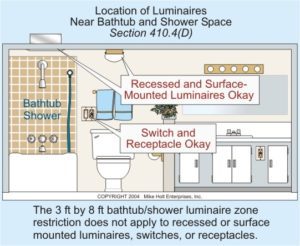
Home Inspection Myth 7
Fuses are unsafe are should be upgraded to breakers
The Truth
As far as over current protection is concerned, fuses are just as safe as breakers. Fuses will generally trip faster than a breaker. For most fuses, when the current running through a fuse exceeds the listed limit, a thin piece of metal will melt and cut power to the circuit. Breakers trip on a curve. They are designed to trip after being overloaded for period of time. The higher the overload, the faster they will trip.
Fuse panels can generally have the same defects found in a breaker panel. However, since a fuse panel has been in the home for much longer, we do tend to find more actual defects in them. Fuses also lend themselves to misuse by homeowners as homeowners will “fix” a fuse that continues to blow by installing a higher rated fuse which is definitely a safety concern. Some insurance companies have higher premiums for homes with fuse panels, or won’t insure them at all.
So while an upgrade could a cost effective upgrade, it shouldn’t be done on the back of an inspectors condemnation that fuses are unsafe.
Home Inspection Myth 8
Federal Pacific Electrical panels were recalled.
The truth
Neither Federal pacific electrical panels or their breakers were recalled. Here is the statement from the CPSC.
“The Consumer Product Safety Commission announced today that it is closing its two year investigation into Federal Pacific Electric Stab-lok type residential circuit breakers. This action was taken because the data currently available to the Commission does not establish that the circuit breakers pose a serious risk of injury to consumers.”
Home Inspection Myth 9
Home Inspectors are not allowed to flip breakers, light a pilot, or turn valves.
The Truth
Nothing prohibits a home inspector from flipping a breaker, lighting a pilot, or turning a shut-off valve. According to InterNACHI, the industry’s professional association, home inspectors are not required to do so, but we are not prohibited.
This allows us to decide when we feel it’s safe. It is almost always safe to do so. However, many home inspectors use this as a cop-out to not do it.
Home Inspection Myth 10
Only a mold test can confirm the presence of mold
The Truth
EVEN THE EPA DOES NOT RECOMMEND TESTING MOLD. Here is their take on it.
“In most cases, if visible mold growth is present, sampling is unnecessary. Since no EPA or other federal limits have been set for mold or mold spores, sampling cannot be used to check a building’s compliance with federal mold standards. Surface sampling may be useful to determine if an area has been adequately cleaned or remediated.”
There you, if you can see the mold, it’s mold, and it doesn’t need to be tested.
Well what if it is mildew, or fungus?
It doesn’t matter. Mildew is mold, mold is fungus. They’re all caused by moisture and they all need to be remediated after the source of moisture is addressed.
Final Word
Home inspections are supposed to be unbiased, objective visual inspections of the major systems and components of the home. Most inspection reports are completely subjective inundated with opinions. When a home buyer is buying a home, they need facts.
